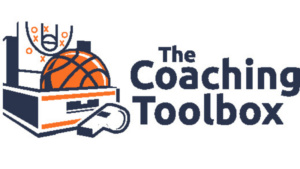
This post contains some of my takeaways from an old Xavier Basketball Coaching Newsletter
You can see their archives at this link.
The first 3 are defensive drills and the last one is a set of practice expectations. While not all will fit your coaching situation or personality, I hope you can find a few items that can be adapted for your team.
Competitive Shell Drill
1. The drill begins with three offensive players competing against three defensive players at the three quarter court level. The offensive team moves the ball over the half court line as the defense executes proper shell positioning. Once the ball is crossed over half court the offense runs the shell action of the day.
2. They compete until a shot is taken. If a basket is scored, the offense and defense switch roles. In order for the basket to count the offensive team that is now on defense, must get a stop to accompany their basket. A basket followed by a stop counts as one point. The drill is played until the first team scores three points – three baskets accompanied by three stops.
3. This same drill can also be executed four on four.
1 on 1 Bust-out Drill
1. This is a one on one fullcourt drill. The defensive player is positioned at the foul line three quarter court level, the offensive player is at the top of the key directly behind the defender. The action begins with a coach yelling “shot.”
2. On the “shot” the defensive player breaks to the outlet position and becomes the offensive player. The original offensive player attempts to deny the outlet and establishes three quarter court pressure on the catch.
3. They play one on one across half court. Once across half court the offensive player passes to a coach on the wing and inside cuts the defense. Assuming the offensive player did not receive the pass on the inside cut, he then cuts through the lane and out opposite.
4. The ball is now skipped to the offensive player by the coach. They play one on one live from the wing. On the conclusion of the one on one action, offense and defense switch roles and return back down the court.
4 on 3 closeout Drill
1. The drill begins with four offensive players versus three defensive players. The offensive players cannot move without the ball. The drill is half court only.
2. The defense must get three consecutive stops to get out. Possession of the ball by the defense equals a stop. If the offense scores or is fouled before a “third consecutive stop” occurs, the consecutive stop count returns to zero.
3. The offense must shoot on three passes or less.
4. On every catch by an offensive player, one of the three defenders, the closest one, must actively closeout and defend the ball. A defender should not have to take two consecutive passes.
On Court Practice Rules
Below are the rules we shared with our team about our expectations of behavior in practice.
1. Always be on time. There is an 8 minute pre/post practice set up each day for your development. DTR means dressed, taped, ready for all practices including a morning on the court workout unless otherwise posted. Ankle braces and/or tape is mandatory unless a medical condition permits otherwise.
2. Being on time means being “ready to play” when the whistle blows to begin practice. Do not use our first drill to get ready because practice will always begin with a “bang”. We attack in everything that we do. This includes the start of each practice.
3. We will end each practice in a circle stretch.
4. When a coach talks, stop and listen. You can’t pay attention if you are moving. When a coach makes a teaching point to one player he is talking to all players. When on the sideline, watch a player at your corresponding position so that you won’t make the same mistake as him.
5. Don’t ever talk to another player while a coach is talking. We have no time to repeat what has already been said.
6. The pace of how we play has increased, so has the pace of how we practice. Going from one segment to the next has to happen quickly. Move from one thing to the next at a fast pace. Don’t walk anywhere.
7. No head bands or jewelry. Always have a 3rd color on – t-shirt.
8. Don’t shoot an extra shot or take an extra dribble after the whistle blows. No balls should be used while a player is out of practice unless given permission by a coach.
9. While standing on the X in practice, all players should be in front of me. We must see everyone’s eyes.
10. While shooting free-throws in practice, there is no talking.
11. Playing time is earned not given. We have a deep team and minutes in games will come from competing and performing on a daily basis. It is also important that you understand your role and our system. We need players that compliment each other and at the same time embrace what we do (The Xavier Way).
12. Coaches are not referees so play hard, compete and work to get better. Do not make a coach look bad because a “bad call” happened in a segment of practice.
13. Communication is an expectation in practice. We must communicate on a daily basis to be able to communicate under pressure in a game. In every segment of practice, communicate to your teammates. This is a point of emphasis in 06-07.
14. If moodiness is a part of who you are, get beyond it and understand that we depend on each other at all






